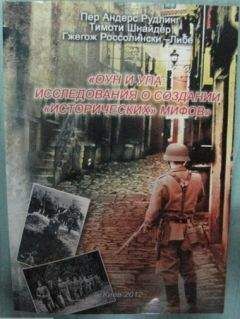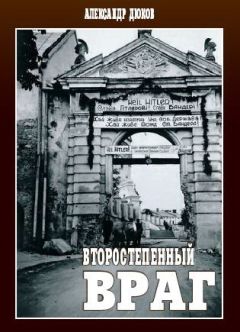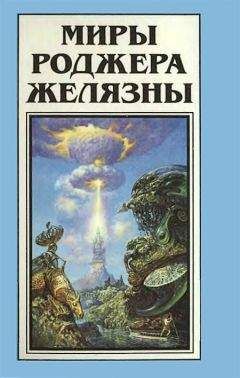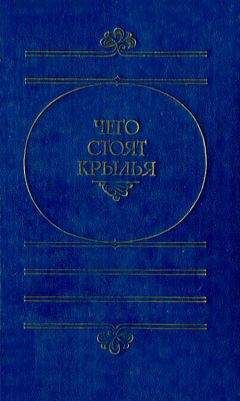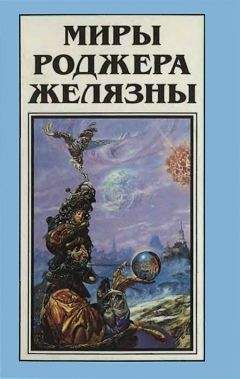388
Tsentral'nyi derzhavnyi arkhiv hromads'kykh ob'iednan' Ukrainy (TsDAHO) f. 1, op. 23, spr. 926, l. 199 (Postanovy II. Velykoho Zboru Orha-nizatsni Ukranns'kykh Natsionalistiv, l. 37). This salute later embarrassed the OUN. In postwar publications reprinting the resolutions of the second OUN conference, the resolution about the fascist salute was deleted from the text. Compare, e.g., OUN v svitli postanov Velykykh Zboriv [The OUN in the Light of the Resolutions of Grand Assemblies] (n.p.: Zakordonni Chastyny Orhanizatsm Ukraпns'kykh Natsionalistiv, 1955), pp. 44–45 with the original publication of 1941 in: TsDAHO f. 1, op. 23, spr. 926, l. 199 (Postanovy II. Velykoho Zboru Orhani-zatsпi Ukraпns'kykh Natsionalistiv, 37).
Not all DPs left Ukraine together with the withdrawing German army in 1944. Some of the DPs were sent to Germany as forced labourers earlier during the war.
Himka, John-Paul: A Central Euro pean Diaspora under the Shadow of World War II: The Galician Ukrainians in North America. In: Austrian History Yearbook 37 (2006), pp. 17–31, here p. 18.
Satzewich, Vic: The Ukrainian Dia spora. London, New York: Routledge 2002, p. 105.
Ibid.
V Avangardi Ukraпns’koi spravy. Liga vyzvolennia Ukraпny [In the Vanguard of the Ukrainian Matter]. In: http://www.lucorg.com/luc-histo-ry_174.htm (accessed: 23.10.2009).
Sawa-Priatka, Tania: A Short His tory of the Ukrainian American Youth Association’s» Oselia «on the Occasion of its 50th Anniversary. In: http://www.cym.org/us/ellenville/Oselia50_UWar-ticle.asp (accessed: 09. 12.2009).
Sawa-Priatka, Tania: unnumbered manuscript. For the organisation of banderivtsi in Canada, cf. Lalande, Julia:»Building a Home Abroad«. A Comparative Study of Ukrainian Migration, Immigration Policy and Diaspora Formation in Canada and Germany after the World War II (Diss., Univ. of Hamburg, 2006). In: http://www. sub.uni-hamburg.de/opus/volltexte/2007/3265/pdf/Lalande_Dissertation_2006.pdf, pp. 184–190 (accessed: 24.10.2009). For the camp in Ellenville, the monument of the Ukrainian heroes and the reproduction of banderits in this camp, see http://www.cym.org/us/archives/2009/2009PamyatnykProj.asp (accessed: 24.10.2009). For the camps in Canada, cf. Mycak, Iryna: The Ukrainian Youth Association of Canada 1948–1988. Toronto: Beskyd Graphica 1990, p. 8.
On multiculturalism in general and debates about multiculturalism, cf. Powell, Timothy B.: All Colors Flow into Rainbows and Nooses. The Struggle to Define Academic Multiculturalism. In: Cultural Critique 55 (2003), pp. 152–181. For multiculturalism in Canada, cf. Cameron, Elspeth (Ed.): Multiculturalism and Immigration in Canada. An Introductory Reader. Toronto: Canadian Scholar's Pr. 2004; Bissoondath, Neil: Selling Illusions. The Cult of Multiculturalism in Canada. Toronto: Penguine 2002; "Riliek, Slavoj: A Leftist Plea for >Eurocentrism<. In: Critical Inquiry 24 (1998), pp. 988-1009; "Riliek, Slavoj: Multiculturalism, or The Cultural Logic of Multinational Capitalism. In: New Left Review 225 (1997), pp. 28–51.
For a critique of national representation of World War II in Ukraine, cf. Himka, John-Paul: Victim Cinema. Between Hitler and Stalin: Ukraine in World War II — The Untold Story. In: Kasianov, Georgiy/Ther, Philipp (Eds.): A Laboratory of Transnational History. Ukraine and Recent Ukrainian Historiography. Budapest: Central European UP 2009, pp. 211–220.
Cit. Lalande 2006, p. 257.
Lupul, Manoly R.: The Politics of Multiculturalism. A Ukrainian-Canadian Memoir. Edmonton, Toronto: Canadian Inst. of Ukrainian Studies Pr. 2005.
Ibid., p. 322.
For Lysiak-Rudnytsky after the war, cf. Canadian Institute of Ukrainian Studies. A Brief History from 1976 to 1996. In: http://www.ualberta. ca/CIUS/about/about- history.htm (accessed: 29.07.2010). For Rudnytsky during the war, cf. Himka, John- Paul: Ethnicity and the Reporting of Mass Murder: Krakivs'ki visti, the NKVD Murders of 1941, and the Vinnytsia Exhumation (forthcoming in a volume on violence in the borderlands, ed. By Omer Bartov and Eric Weitz).
Canadian Institute of Ukrainian Studies. A Brief History from 1976 to 1996. In: http://www.ualberta.ca/CIUS/about/about-history.htm (accessed: 29.07.2010).
Luckyj, George S. N.: Memoirs. In: Isajiw, Wsevolod/ Boshyk, Yuruy/ Senkus, Roman (Eds.): The Refugee Experience: Ukrainian Displaced Persons after World War II. Edmonton: Canadian Inst. of Ukrainian Studies Pr. 1992, pp. 508512, here p. 508.
Luckyj 1992, p. 508f.
On Petro Savaryn memoirs, in which he discusses and expresses pride in his SS past, cf. Savaryn, Petro: Z soboiu vzialy Ukrainu. Vid Ternopillia do Al’berty [We took Ukraine with Us. From Tarnopil to Alberta]. Kyiv: KVITs 2007, p. 275; Bairak, Mykhailo: Ukrains’ka Strilets’ka Hromada v Edmontoni [Ukrainian War Veterans Association in Edmonton]. Edmonton: Ukrains’ka Strilets’ka Hromada — Vid-dilu v Edmontoni 1978, p. 185. On the 14th Grenadier Division of the Waffen SS, cf. Golczewski, Frank: Shades of Grey: Reflections on Jewish-Ukrainian and German-Ukrainian Relations in Galicia. In: Brandon, Ray/Lower, Wendy (Eds.): The Shoah in Ukraine. History, Testimony, Memonalization. Bloomington: Indiana UP 2008, pp. 114–155, here p. 136.
For Kubiiovych and Krakivs ’ki visti, see Himka: Ethnicity and the Reporting of Mass Murder (forthcoming).
Kubiiovych to Frank, 29 August 1941, NAC, MG 31, D203, vol. 23, file 31. Cit. Golczewski 2008, p. 133f. In his seminar History at the Movies: The Holocaust in Cinema at the University of Alberta in the winter semester of 2010, John-Paul Himka mentioned that during the War his father-in-law Mykhailo Chomiak, the chief editor of Krakivs’ki visti moved into an Aryanised Jewish apartment in KrakYw. However, Himka did not reveal any specific information about this incident. After the war Chomiak worked for the Edmonton based Ukranns'ki visti (Ukrainian News), and between 19811982 he was the chief editor of this newspaper. On Chomiak as the editor of Krakivs’ki visti, cf. Himka, John-Paul: Krakivski visti: An Overview. In: Gitelman, Zvi/Hajda, Lu-bomyr/Himka, John-Paul/Solchanyk, Roman (Eds.): Cultures and Nations of Central and Eastern Europe. Essays in Honour of Roman Szporluk. Cambridge: Harvard Ukrainian Pr. 1998, pp. 251–261, here p. 254.
Motyka 2006, p. 181, p. 383, p. 386; Golczewski 2008, p. 136; Him-ka 2006, p. 165f.
Golczewski, Frank: Geschichte der Ukraine. Gцttingen: Vandenhoeck & Ruprecht 1993, pp. 259–260.
Bergesen, Albert: Die rituelle Ordnung. In: Belliger, Andma/Krieger, David J. (Eds.): Ritualtheorien. Ein einfehrendes Handbuch. Opladen, Wiesbaden: Westdt. Vlg. 1998, pp. 49–76, here p. 50f.
Kertzer, David J.: Ritual, Politik und Macht. In: Belliger/Krieger 1998, pp. 365379, here p. 387.
Bergesen 1998, p. 53.
Ibid., p. 50f.
Stepan Bandera ne zhyve [Stepan Bandera is dead]. In: Ukrainian News 42/XXXII (19.10.1959), p. 1.
Ukrainian Echo 44/XI (24.10.1959), p. 1, p. 6.
Jak zhynuv Stepan Bandera [How Bandera died]. In: Ukrainian News 43/ XXXII (26.10.1959), p. 1f.
, Ostannia doroha providnyka Ban- dery [The Final Journey of the» Providnyk «Bandera]. In: Ukrainian Echo 45/XI (31.10.1959), p. 1.
Cf. the picture in: Ukrainian Echo 45/XI (31.10.1959), p. 1.
1500 People at Bandera’s Funeral. In: Ukrainian News 44/XXXII (02.11.1959), p. 1.
Zvernennia Provodu ZCH OUN [Appeal of the ZCH OUN Leadership]. In: Ukrainian Echo 46/XI (07.11.1959), p. 1.
U pokloni Providnykovi [Deference to the Providnyk]. In: Ukrainian Echo 46/XI (07.11.1959), p. 3.
Ibid.
Ibid.
Na Fond vyzvoГnoп borot'by im. Ste-pana Bandery [For Stepan Bandera's Liberation Struggle Fund]. In: Ukrainian Echo 46/XI (07.11.1959), p. 5.
U pershu richnyciu smerty sl. p. Providnyka S. Bandery [The First Anniversary of Stepan Bandera's Death]. In: Ukrainian Echo 44/XII (29.10.1960), p. 2; U richnytsiu smertysl. p. S. Bandery [On the Anniversary of Bandera's Death]. In: Ukrainian Echo 45/XII (05.11.1960), p. 7.
U pershu richnytsiu smerty S. Bandery [On the First Anniversary of Bandera’s Death]. In: Ukrainian News 43/XXXIII (28.10.1960), p. 7.
Vidznachyly rokovyny smerty S. Bandery [We Celebrated the First Anniversary of Bandera’s Death]. In: Ukrainian News 43/XXXIV (23.10.1961), p. 3.
U tretiu richnytsiu smerty S. Ban-dery [On the Third Anniversary of S. Bandera’s Death]. In: Ukrainian News 42/XXXV (18.10.1962), p. 3.
For the demonstration in New York on 15 October 1959 and 17 October 1959 in Washington and Ottawa, cf. Protymoskovs'ki demonstartsni [Anti-Muscovite Demonstrations]. In: Ukrainian Echo 45/XVI (31.10.1964), p. 2.
U 5-tu richchia smerti Stepana Bandery [On the Fifth Anniversary of Stepan Bandera's Death]. In: Ukrainian Echo 45/XVI (31.10.1964), p. 5.
U 5-tu richchia smerti Stepana Bandery [On the Fifth Anniversary of Stepan Bandera's Death]. In: Ukrainian Echo 46/XVI (07.11.1964), p. 7.
U 5-tu richchia smerti Stepana Bandery [On the Fifth Anniversary of Stepan Bandera’s Death]. In: Ukrainian Echo 46/XVI (07.11.1964), p. 3.
Provincial Archives of Alberta, accession number 97.732/161 (Orhani- zatsm Ukraпns’koho Vyzvol’noho Frontu. Obizhnyi Lyst — Zaklyk), without a number of leaf.
Desiaty rokovyny smerty Bandery [The 10th Anniversary of Stepan Bandera’s Death]. In: Ukrainian News 43/XLII (23.10.1969), p. 5.
U 10-tu richchia smerti Stepana Bandery [On the 10th Anniversary of Stepan Bandera’s Death]. In: Ukrainian Echo 46/XXI (29.11.1969), p. 3.
Na poshanu sl. P. Stepana Bandery [Paying Homage to Stepan Ban-dera]. In: Ukrainian Echo 39/XXXI (19.09.1979), p. 1.
Na poshanu Stepana Bandery [Paying Homage to Stepan Bandera]. In: Ukrainian Echo 46/XXXI (07.11.1979), p. 1f.
U 50-richchia OUN [On the 50th Anniversary of the OUN]. In: Ukrainian Echo 7/XXXII (06.02.1980), p. 3.
For encouragement for celebration, cf. Zvernennia KUK [Appeal of the KUK]. In: Ukrainian Echo 43/XXXVI (24.10.1984), p. 2. For celebrations in Munich in 1984, cf. U pokloni Stepa-novi Banderi [Obeisance to the Pro-vidnyk]. In: Ukrainian Echo 44/XXXVI (31.10.1984), p. 1f., 4. For celebrations in Munich in 1989, cf. Zhalobni vidz-nachennia v Miunkheni [Mourning Ceremony in Munich]. In: Ukrainian Echo 45/XLVI (08.11.1984), p. 1f. For celebrations in Munich in 1999, cf. Povidomlennia [Announcement]. In: Ukrainian Echo 37/LI (04.10.1999), p. 1.
On Roman Shukhevych and the ethnic cleansing against Poles in Volhynia and Galicia, cf. Motyka 2006, p. 367. For Shukhevych’s atrocities against the Jews see Bruder 2007, p. 150. For Shukhevych’s atrocities in 1942 in Belarus, cf. Rudling, Per Anders: Schooling in Murder: Schutzmannschaft Battalion and Hauptsturmfbhrer Roman Shukhevych in Belarus 1942. In: Prawda historycz-na a prawda politaczna (volume in progress after a conference in Wroclaw with the same title).
Ukrainian News 20/LXXXII (15–28.10.2009), p. 8.
Broda, Ihor: Stepan Bandera — po-klin bezsmertnomu [Stepan Bandera — Deference to the Immortal]. In: Ukrainian News 20/LXXXII (15.-28.10.2009), p. 1, 8.
Ibid., p, 1.
Ibid., p, 2.
Cf. Ukrainian Echo 35/LXI (2009) (Special Section without a specific day of publication).
Golczewski 2010, p. 450. At the time of writing of this article the dean of the Philosophy Department at the UFU is the director of the Toronto office of the CIUS, Prof. Dr. Frank Sysyn. The dean of the Department for State and Economics Studies is Prof. Iaroslav Hrytsak, the director of the Institute for Historical Research at the L’viv University and visiting professor at the Historical Department of the Central European University in Budapest. Cf. Ukrainische Freie Universi^t/Ukrains’kyi Vil’nyi Univer-sytet/Ukrainian Free University Flyer. Munich: Ukrainische Freie Univ. 2010, p. 2. In an interview in 2009 Iaroslav Hrytsak wondered as to whether documents existed that would confirm that Roman Shukhevych contributed to the destruction of Jews in Ukraine. Since Franziska Bruder’s 2007 monograph proved this in the case of at least two villages, Hrytsak’s wondering seems remarkable. For the interview with Iaroslav Hrytsak, cf. Istoryk Ia. Hrytsak: Avtor kontseptsii henotsydu spyravsia na pryklad holodomoru [The Author of the Concept of Genocide Argued about the Famine]. In: Unian (15.09.2009) http://www.unian. net/ukr/news/news- 336228.html (accessed: 30.09.2010). For Bruder’s monograph and the Nachtigall battalion under the command of Roman Shukhevych, which slaughtered the entire Jewish population of two villages, see Bruder 2007, p. 150. Also see the original document in TsDAVOV f. 3833, op. 1, spr. 5 7, l. 17 (Autobiographies of well-known OUN members).
